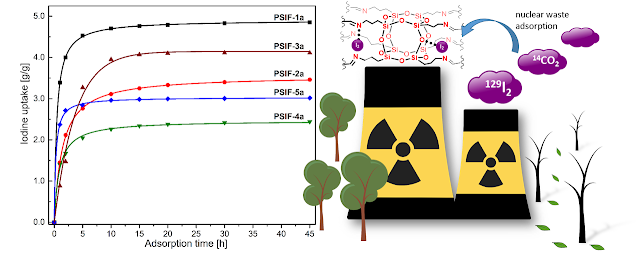Porous Silsesquioxane-Imine Frameworks (PSIF)
Volatile iodine is primarily released during the reprocessing of spent nuclear fuel and in the event of nuclear accidents. Its ability to travel long distances and bioaccumulate in the human thyroid makes it particularly dangerous. Current iodine capture technologies—like silver-doped zeolites, activated carbons, and MOFs (metal-organic frameworks)—have varying degrees of success but suffer from drawbacks including limited capacity, high cost, thermal instability, or difficulty in regeneration.
Hence, there's an urgent need for adsorbent materials that are not only efficient and selective but also economical, scalable, and thermally stable.
Enter Porous Silsesquioxane–Imine Frameworks (PSIFs)
The research team tackled this challenge by designing and synthesizing a new type of porous hybrid material that combines two key structural components:
-
Silsesquioxane Units: These are cage-like silica-based molecules that offer structural rigidity and excellent thermal stability.
-
Imine Linkages: These organic bonds form through the condensation of amines and aldehydes, creating a flexible and tunable network.
By linking these two components, the team developed PSIFs—materials with large surface areas, chemical flexibility, and high thermal resilience.


Comments
Post a Comment